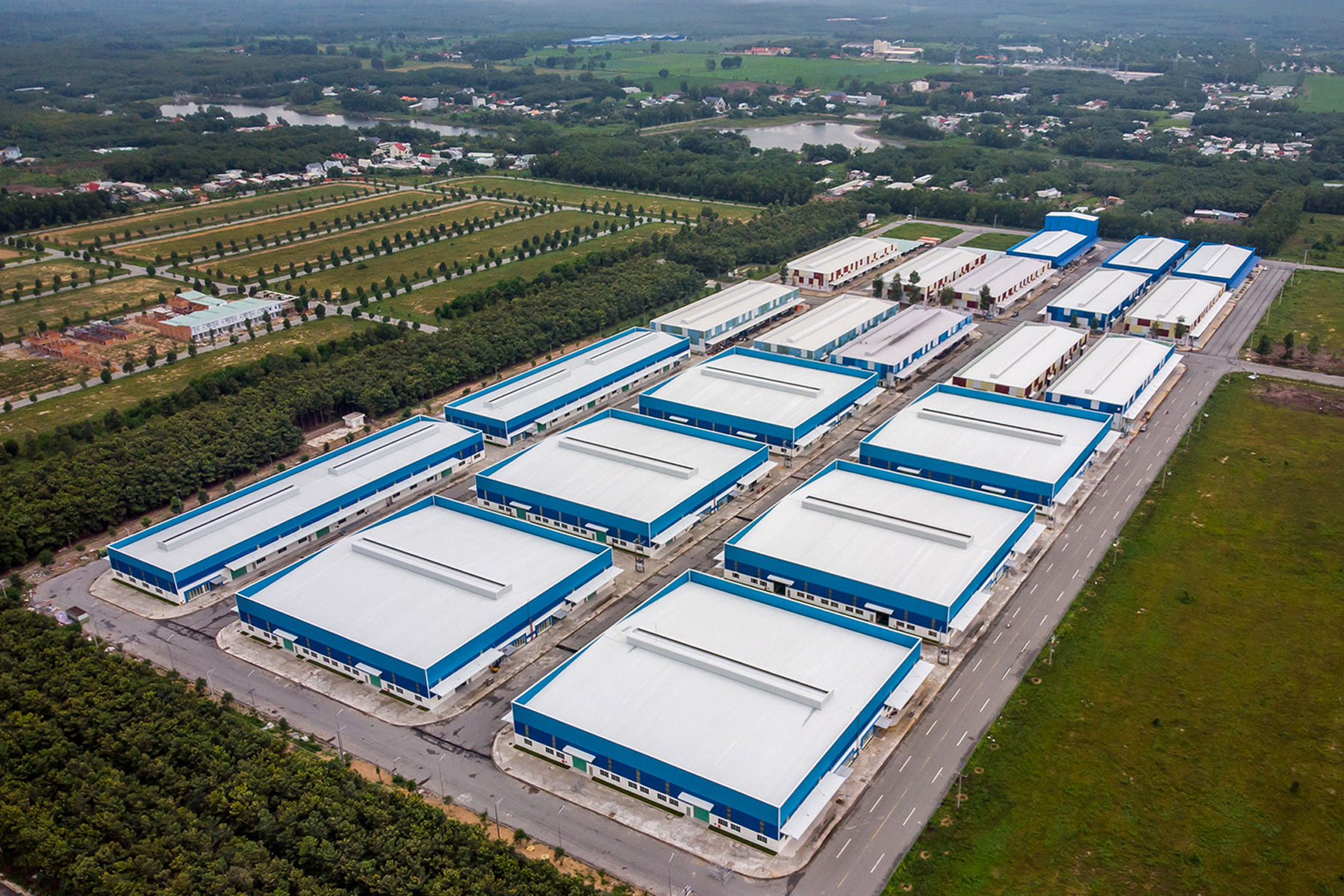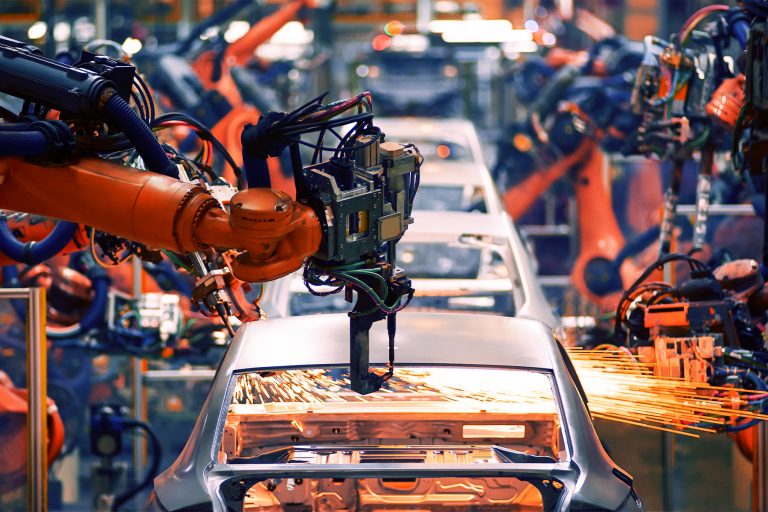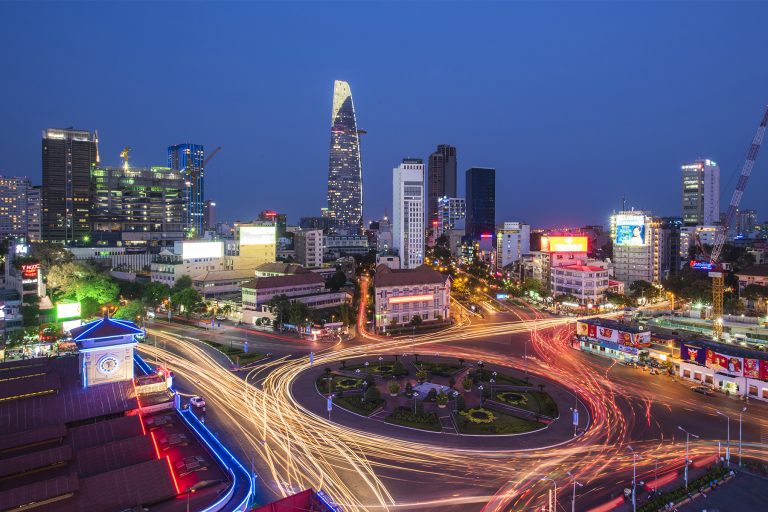[5 min read]
As reported by Ministry of Planning and Investment, Vietnam has 260 active industrial parks in three key economic zones, including the NKEZ (Northern Key Economic Zones), CKEZ (Central Key Economic Zones) and SKEZ (Southern Key Economic Zones). Finding the right location to establish factories may be time-consuming – especially for new businesses.
Booming infrastructure development
With the aim of increasing the nation’s competitiveness in drawing high-quality FDI inflows, Vietnam’s infrastructure facilities have undergone remarkable improvements in terms of both quality and quantity.
As reported by Ministry of Transport, northern Vietnam is the region that possesses the highest density of highways in the country. Nine of these highways play a critical role in connecting Hanoi with more than 10 other Northern provinces. Among these highways, five freeways are directly linked to prime industrial zones in the North: Hanoi – Hai Phong, Hanoi – Ha Long, Hanoi – Bac Ninh, Hanoi – Thai Nguyen and Hanoi – Lao Cai.
Southern Vietnam has two main highways: Ho Chi Minh City – Long Thanh – Dau Giay (connecting southeast provinces) and Ho Chi Minh City – Trung Luong (connecting southwest provinces). The vast majority of freight in the South continues to solely rely on national routes. However, according to Government plans, three more highway systems scheduled to completed by 2025 will expand connections between key industrial areas in the South. While the My Phuoc – Tan Van expressway will work to connect southeast provinces, the other two expressways — Ben Luc – Long Thanh and Trung Luong – My Thuan — will relieve traffic in the southwest region.
According to the Vietnam Maritime Administration, Vietnam has 44 seaports with an annual total capacity of 470-500 million tons. Some of the main ports in Vietnam are located in Hai Phong, Da Nang and Ho Chi Minh City. There are also other smaller ports in Vietnam, bringing the total number of ports in the country to 320.
The number of container ships put through customs clearance in Vietnam has increased over the years. Overall, total cargo volume handled in Vietnamese seaports reached nearly 576.5 million tons in the first 10 months of 2020. In addition, container throughput reached more than 18 million TEUs in the first 10 months of 2020 — an increase of 12% compared to the same period in 2019. Notably, the numbers of ships recorded in Hai Phong and Ho Chi Minh City accounted for 70% of docked ships.
Categorizing industrial production zones
There are three key economic zones in Vietnam: the NKEZ (Northern Key Economic Zones), CKEZ (Central Key Economic Zones) and SKEZ (Southern Key Economic Zones).
The NKEZ consists of seven cities/provinces: Hanoi, Hai Phong, Bac Ninh, Hai Duong, Hung Yen, Vinh Phuc and Quang Ninh. The strength of this area is centered on the manufacturing of electronics, motorcycles, high technology products and machinery. It should be noted that this area is currently considered as the No. 1 choice for manufacturers that are considering a Chinese + 1 strategy thanks to two primary factors: competitive labor costs and proximity to the world’s second largest economy. BW has four sites in the NKEZ, including VSIP Bac Ninh, VSIP Hai Phong, VSIP Hai Duong and Deep C IZ.
The CKEZ consists of five cities/provinces: Thua Thien Hue, Da Nang, Quang Nam, Quang Ngai and Binh Dinh. This region focuses on developing light industry in the main areas of food processing, apparel, construction materials and processing of paper and forest products.
The SKEZ is made up of eight cities/provinces, including Ho Chi Minh City, Binh Duong, Dong Nai, Long An, Ba Ria – Vung Tau, Binh Phuoc, Tay Ninh and Tien Giang. This zone considered as the “backbone” of the traditional rubber, plastics and apparel industries. In addition, this area is suitable for machinery and equipment manufacturing and metallurgy. The strength of this area is the diversity of the economy; small and medium manufacturing companies are very fond of this area because of the diversity of raw materials and human resources. BW’s ready-built factories and warehouses are available in the Nhon Trach IP, My Phuoc 3 IP, Bau Bang IP, Tan Dong Hiep B IP, VSIP IIA and Tan Phu Trung IZ within SKEZ.
In order to know more about how to pick a manufacturing site in Vietnam and to receive free support from BW, please contact our hotline at (+84) 28 710 29 000 or email us at enquiry@bwidjsc.com.




